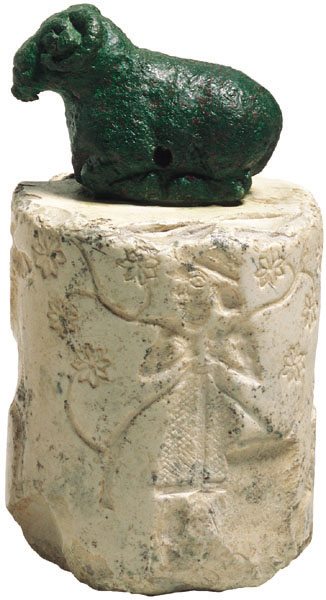Image Details

Photo by Jürgen Liepe/Bildarchiv Preussischer Kulturbesitz
Throughout Mesopotamian history, kings are associated with sacred trees. The marble cylinder seal shown here (compare with impression of marble cylinder seal), from fourth-millennium B.C. Uruk, in southern Mesopotamia, shows a ruler feeding two sheep from a sacred tree. (Note that the clay impression is the mirror image of the seal, which is surmounted by a sheep used as a handle.) Framing the scene are curving bundles of reeds, a common symbol of the Sumerian fertility goddess Inanna (called Ishtar by the Assyrians and Astarte by the Phoenicians). In Assyrian art, depictions of kings are often accompanied by symbols of the paired deities Ashur (winged disk) and Ishtar/Inanna (star), representing the holy family of divine father, divine mother and divine son (the king).
